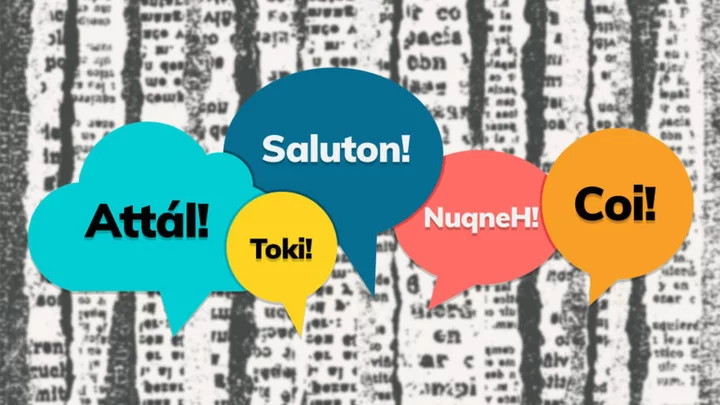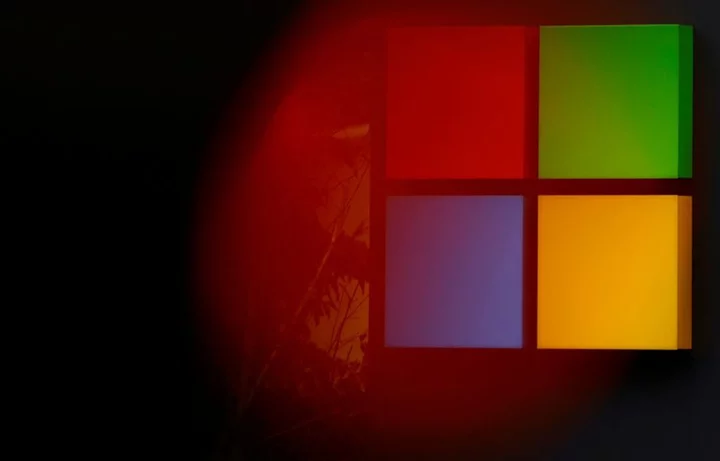Language is messy. Different rules, scripts, and sounds make it difficult for an English speaker to learn Mandarin, and vice versa. There has to be a better way—and some conlang creators think there is. A conlang is a constructed language, where someone has intentionally created its grammar, vocabulary, and phonology. Here are five conlangs you can learn.
1. Toki Pona
English has more than 100,000 words—and that number jumps to several hundred thousand when you factor in that many words have multiple meanings. Could you get by with 120? Linguist Sonja Lang created Toki Pona in 2001 “to understand the meaning of life in 120 words.” These days, Toki Pona speakers are using 137 “essential words,” but still.
The word for “simple” is also the word for “good”: pona. If that sounds more like a life philosophy than a language, that’s not an accident. Lang designed Toki Pona as a coping mechanism during a period of depression, according to The Globe and Mail.
When it comes to learning a language, simple is good. Or fast, anyway. It only takes around 30 hours to learn Toki Pona. (For context, French will take you 30 weeks.) The conlang’s vocabulary is drawn from English, Esperanto, Finnish, Croatian, Georgian, Dutch, and Chinese. You can find over 10,000 speakers from around the world to practice with on Discord.
Not for you? As they say in Toki Pona, nasin ante li pona tawa jan ante, or “Different ways are good for different people.” In other words, different strokes for different folks.
2. Lojban
Lojban has one thing other conlangs don’t: an xkcd comic poking fun at it. “If you learned to speak Lojban, your communication would be completely unambiguous and logical,” Cueball says in the comic. “Yeah,” Black Hat replies. “But then I’d have to speak with the type of people who are into Lojban.”
Lojban is an offshoot of Loglan, a.k.a. logical language, which was developed by sociologist and sci-fi author James Cooke Brown in the 1950s with a question in mind: Could a logically designed, culturally neutral language change the way speakers thought? In the 1980s, a schism in the Loglan community resulted in the birth of Lojban, a new and improved logical language whose name was formed using the Loglan words for “logic” and “language”: logji and bangu [PDF]. Today, there is a bigger community around Lojban, which shares much of Loglan’s ethos, grammar, and vocabulary.
The root words, or gismu, of Lojban come from six languages—English, Chinese, Hindi, Spanish, Russian, and Arabic—and the grammar is designed to eliminate ambiguity. For an example of how this looks in practice, translate Occam’s Razor [PDF]. In English, you would say “the simplest explanation is usually the best.” In Lojban, you would say roda poi velcki cu so’eroi ke ganai saprai gi xagrai. Literally, this means “all somethings which-are explanations mostly-are (if superlatively simple then superlatively-good).” A bit unwieldy? Sure. But boy, is it precise.
There are dozens of competent Lojban speakers, and many more are learning. (According to the Lojban website, there are more than 200 subscribers to its mailing list.) They congregate online.
3. Klingon
Parseltongue (Harry Potter), Dothraki (Game of Thrones), Na’vi (Avatar), Quenya (The Lord of the Rings) ... Some of the best-known conlangs are part of pop culture—and perhaps none of them have been as enthusiastically embraced as Klingon.
Linguist Marc Okrand developed Vulcan for Star Trek II: The Wrath of Khan and Klingon for Star Trek III in the 1980s. His goal for the latter alien language was to make it sound, well, alien. “There’s no sound in Klingon that you can’t find in some real language, but the collection of sounds is unique,” he told CNN.
Klingon has a lot of vocabulary about space, fighting, and fighting in space. loghDaq Suvrupbogh SuvwI'pu' chaH Hoch SuvwI'pu''e' means “in space, all warriors are cold warriors.” Wondering what’s up with the uppercase letters? They indicate sounds that don’t exist in the English language. You have to huff, hiss, and hock your way through them.
Conlang expert (and Mental Floss contributor) Arika Okrent has estimated that there are 20 or 30 Klingon speakers who carry on a spontaneous conversation in the language (that number jumps to the hundreds when it comes to written Klingon). Visit the Klingon Language Institute to join them.
4. Ithkuil
Many conlangs are designed to be easy to learn and understand—but not Ithkuil: The language demands a specificity of speakers—or, more likely, writers—that is not for the faint of heart. There aren’t just subjects and objects in Ithkuil; there are enablers, experiencers, stimuli, recipients, and contents. “The idea of Ithkuil is to convey deeper levels of human cognition than are usually conveyed in human language,” inventor John Quijada told The New Yorker.
To describe Marcel Duchamp’s painting Nude Descending a Staircase, No. 2, Quijada—who spent three decades creating Ithkuil—lands on aukkras êqutta ogvëuļa tnou’elkwa pal-lši augwaikštülnàmbu. That means something like “an imaginary representation of a nude woman in the midst of descending a staircase in a step-by-step series of tightly integrated ambulatory bodily movements which combine into a three-dimensional wake behind her, forming a timeless, emergent whole to be considered intellectually, emotionally, and aesthetically.”
There are thousands of Ithkuil learners online, but no fluent speakers. Not even Quijada considers himself truly fluent: “I am fairly proficient in knowing the characters of the script but still need to look up the rules when writing it,” he wrote on his website.
5. Esperanto
Ophthalmologist L. L. Zamenhoff, writing under the nom de plume Dr. Esperanto, published his international language textbook in 1887. His goal was to create an international language spoken the world over: “Were there but an international language, all translations would be made into it alone ... and all nations would be united in a common brotherhood,” he wrote. Today, between 30,000 and 2 million people speak Esperanto.
The Indo-European roots and simplified grammar of Esperanto make it easy for a wide range of people to pick up. You can probably figure out this proverb without too much head-scratching: Kiam kato promenos, la musof festenas. When the cat’s away, the mice will play.
Start at the Akademio de Esperanto website. Practice on Duolingo. Soon, you’ll be ready to chat with other Esperantists in person.
Are you a logophile? Do you want to learn unusual words and old-timey slang to make conversation more interesting, or discover fascinating tidbits about the origins of everyday phrases? Then get our new book, The Curious Compendium of Wonderful Words: A Miscellany of Obscure Terms, Bizarre Phrases, & Surprising Etymologies, out now! You can pick up your copy on Amazon, Barnes & Noble, Books-A-Million, or Bookshop.org.
This article was originally published on www.mentalfloss.com as 5 Fascinating Conlangs You Can Learn.









